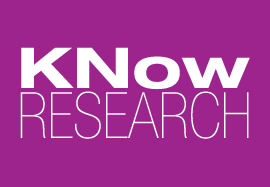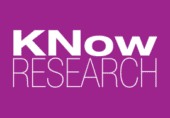Don’t Believe Everything You Think: Overcoming Cognitive Bias in Research
Even the best insights pros are subject to the pitfalls of cognitive bias. We’re human after all, and to err is simply a part of the territory. As humans and researchers, we are trained to seek out patterns. We tend to default to looking for the patterns we expect to see based on our previous knowledge and experience with the world. We’re never fully neutral. And when we lack certainty, the natural tendency of the thinking mind is to fill in the blanks.
However, when we lean too heavily into our biases (which happens both consciously and subconsciously) or we rely too much on heuristics, in our hasty rush to judgement we may end up jumping to incomplete conclusions and flawed decision making.
If none of us can serve as a completely impartial observer, and we are all prone to the slings and arrows of cognitive bias, how can we expect to deliver objective research? The good news is many different avenues are available to help us keep our biases in check.
Here are 5 approaches we take at KNow to tackle biases:
#1 KNow Thyself
First and foremost, don’t believe everything you think! Our thoughts can be tricksters, and what we think is only a part of the story. We all have our blind spots, and an important piece of the puzzle is cultivating awareness as to what those blind spots are so we can overcome them.
One type of blind spot we have is implicit bias – the thoughts and feelings that are beyond our conscious control. Project Implicit is a nonprofit organization founded by three scientists from The University of Washington, University of Virginia, and Harvard University that studies these tendencies and biases. They developed the Implicit Association Test (IAT) to measure subconscious beliefs individuals hold about different demographic groups. The test is free online and available to the public and can help anyone gain a deeper understanding of their own implicit biases. And when we know better, we can do better.
So take the time to turn inward and consciously reflect on your own commonly held beliefs about the topic of exploration. When exploring entry into a new category, for example, be aware of personal attitudes, opinions, or prejudice you may already hold about that category and its consumers. This exercise can help to identify common paradigms that may be worth challenging, and fuel the development of a broader, more diverse range of hypotheses to test in the research.
#2 KNow Thy Team
Almost every project team includes a person (or people) with strong and loud opinions and expectations for how consumers will think or react in research and what the conclusion of the project will look like. In other words, these folks think they already know the answer, even without access to all the evidence. Squeaky wheels like these get the grease, and this leads to biased thinking and potentially wrong conclusions.
Therefore, it’s necessary to encourage everyone on the team to keep an open mind. As consultants and researchers, our oath at KNow is to clearly and accurately communicate the true voice of the consumer, which may not always be in sync with the desires of clients. However, this oath fuels objectivity and keeps us on a clear path to sound decision making based on facts and evidence.
#3 Diversify
A sure way to tackle bias it to diversify the project team; researchers and participants. Building a team with members who come from different roles, functions, levels and backgrounds is a great way to tap into a broader range of perspectives and fresh ways of examining a challenge. Ensure everyone feels safe and empowered to speak up, to challenge one another, and yes, even to be “wrong” and “fail” from time to time.
Broadening the participant pool can also temper bias. Even when a research plan calls for learning around a specific target segment, keep at least some room to invite in variance and diversity of perspectives. For inspiration about how to ensure more diversity and inclusion in research, check out The Research Inclusion Project (TRIP), a podcast miniseries hosted by KNow President and Founder, Katrina Noelle, and Kristen Spaggins from The Band Consultancy.
#4 Treat Every Interview Like It’s the First One
Let’s face it. By the time that last focus group or IDI rolls around, slipping into autopilot can feel alluring. After a full day (or days) of research, it can be tempting to enter into the final hours listening purely for pattern recognition and confirmation of what prior participants have already said. But, with that approach comes the risk of overlooking valuable nuance, perspective and insight. It’s important to be conscious of this tendency in order to overcome it. Knowledge is power! When we are aware, we are better equipped to enter into each interview with the same level of curiosity as the first interview.
Depending on the size of our client partner team, we encourage rotating in some members of the team to observe just one or two groups or interviews rather than the whole kit and kaboodle. That way, there is always someone observing each interview from a blank slate who can offer a fresh take during the debrief.
#5 Make Friends with Uncertainty
Addressing tricky challenges, searching for answers, and meeting deadlines for high stakes decision making, can feel like being in an insights pressure cooker. No one likes sitting with discomfort! It’s in these moments that we can become especially vulnerable to our cognitive biases and relying on them as support to rush to conclusions in order to ease feelings of doubt and uncertainty.
Instead, make friends with doubt and get comfortable with being uncomfortable. Big challenges like the ones our clients face are best served with clear, careful, objective thinking. When the path is unclear, let that be an opportunity to flex the curiosity muscle. Grant permission to ask even more questions, to entertain alternate hypotheses, or even take a brief pause from the problem and give it room to breathe. Better yet, invite in perspective from the broader team as a way to get unstuck without coming undone. With a clear head comes clear answers.
Do you have any other tips and tricks to add to the list? We would love to hear from you. Contact us to learn more about our objective approach to insightful and actionable learning.

